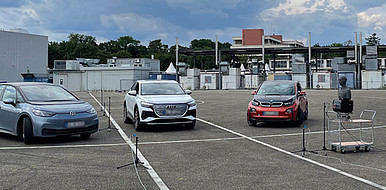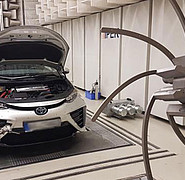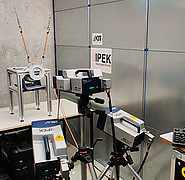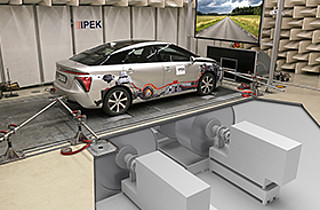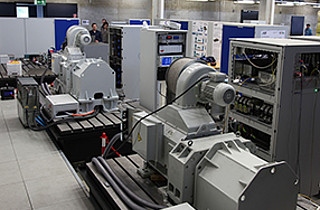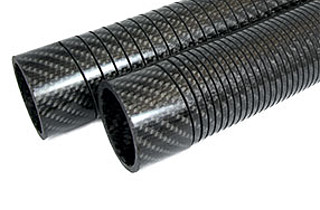From vehicle noise to warning system
Sound is accompaning our everyday life. In the automotive engineering sector sound designers have been at work for years to make engines sound better or flashing noises less obtrusive. Due to the transition in mobility towards electrification, the industry is facing completely new challenges in terms of sound, e.g. making almost noiseless e-drives perceptible.
State of the Art
Made possible by binaural or aurally accurate measurement technology, vehicle sounds are examined realistically. Since the legal requirements for acoustic warning systems for the safety of pedestrians and other vulnerable road users leave a great deal of leeway, manufacturers must largely master the balancing act between perceptibility and annoyance of the sounds on their own.
Technology
Companies receive assistance from the IPEK – Institute of Product Engineering at KIT. The researchers are investigating both, existing car sounds and how future vehicles must sound in order to achieve the highest possible perceptibility with low noise pollution. For example, warning sounds differ by manufacturer, which results in varying effectiveness. The researchers' goal is to establish a method for validating vehicle sounds during development on the basis of defined properties. This will eliminate the need for time-consuming studies with test persons and measurements on test tracks. Vehicle noises that are technically induced or synthetically generated are instead investigated on the chassis dynamometer. Measurement technology, such as the artificial head modeled on a human or an acoustic camera, helps to differentiate sounds according to intensity and source. If, for example, the combustion engine is switched on in a hybrid vehicle, the noise development can be precisely measured during a simulated drive-by. With the help of auralization – artificially making the pass-by audible – it can be experienced by humans and used for optimization.
Advantages
Unternehmen Companies benefit from professional measurement technology at KIT and become part of the acoustic design of the future. In addition to noise, vehicle vibrations can also be measured without contact using a 3D-laser-scanning-vibrometer.
Options for companies
Consulting and methodology is offered by the KIT in a comprising manner. Areas of expertise lie in the field of acoustic and vibration behavior (noise, vibration, harshness). With the help of the test bench, important data can be obtained that contribute to minimizing sources of interference and optimizing noise.
Your contact person for this offer
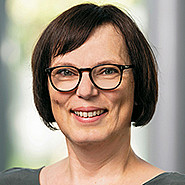
Innovation Manager Mobility and Information Karlsruhe Institute of Technology (KIT)
Innovation and Relations Management (IRM) Phone: +49 721 608-28460
Email: birgit.schulze@kit.edu

